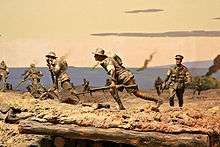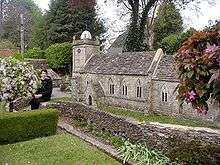Physical model


Physical model (most commonly referred to simply as a model but in this context distinguished from a conceptual model) is a smaller or larger physical copy of an object. The object being modelled may be small (for example, an atom) or large (for example, the Solar System).
The geometry of the model and the object it represents are often similar in the sense that one is a rescaling of the other; in such cases the scale is an important characteristic. However, in many cases the similarity is only approximate or even intentionally distorted. Sometimes the distortion is systematic with e.g. a fixed scale horizontally and a larger fixed scale vertically when modelling topography of a large area (as opposed to a model of a smaller mountain region, which may well use the same scale horizontally and vertically, and show the true slopes).
Physical models allow visualization, from examining the model, of information about the thing the model represents. A model can be a physical object such as an architectural model of a building. Uses of an architectural model include visualization of internal relationships within the structure or external relationships of the structure to the environment. Other uses of models in this sense are as toys.
Instrumented physical models are an effective way of investigating fluid flows for Engineering design. Physical models are often coupled with Computational Fluid Dynamics models to optimize the design of equipment and processes. This includes external flow such as around buildings, vehicles, people, or hydraulic structures. Wind Tunnel and Water Tunnel testing is often used for these design efforts. Instrumented physical models can also examine internal flows, for the design of ductwork systems, pollution control equipment, food processing machines, and mixing vessels. Transparent flow models are used in this case to observe the detailed flow phenomenon. These models are scaled in terms of both geometry and important forces, for example using Froude number or Reynolds number scaling (see Similitude (model)).
A physical model of something large is usually smaller, and of something very small is larger. A physical model of something that can move, like a vehicle or machine, may be completely static, or have parts that can be moved manually, or be powered. A physical model may show inner parts that are normally not visible. The purpose of a physical model on a smaller scale may be to have a better overview, for testing purposes, as hobby or toy. The purpose of a physical model on a larger scale may be to see the structure of things that are normally too small to see properly or to see at all, for example a model of an insect or of a molecule.
A physical model of an animal shows the animals physical composition without it walking or flying away, and without danger, and if the real animal is not available. A soft model of an animal is popular among children and some adults as cuddly toy.some models can be used in different ways as of like prototypes for cars.
A model of a person may e.g. be a doll, a statue, and in fiction a robotic humanoid, e.g. the mechas in the movie A.I..
A model is a 3D alternative for a 2D representation such as a drawing or photograph, or in the case of a globe, a 3D, undistorted alternative for a flat world map.
 Part of the one-ninth scale model of Bourton-on-the-Water at Bourton-on-the-Water, Gloucestershire, England
Part of the one-ninth scale model of Bourton-on-the-Water at Bourton-on-the-Water, Gloucestershire, England
Physical models
Some of the examples of Physical models:
See also
External links
